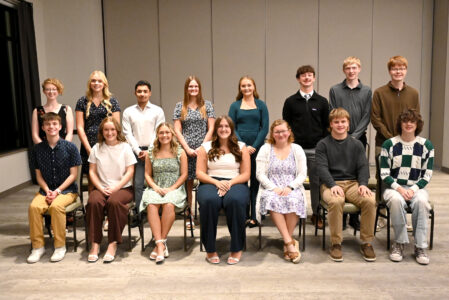Council moves forward with expanded urban renewal area
$928,000 approved for concrete street repairs in 2026
The concept of urban renewal was originally created to deal with slums or blighted neighborhoods, mostly in America’s largest cities.
Urban renewal first came to Iowa in 1957 and was focused on cleaning up neighborhoods near the state capitol in Des Moines, which, by then, fit the classic definition of a slum filled with derelict homes and businesses.
The results are visible today in the West Capitol Terrace and the Lucas, Wallace and Grimes state office buildings, all built on land once considered blighted. Parking lots and garages occupy even more space than the buildings themselves, all built on land cleared by urban renewal.
The City Council of Webster City on Monday held a public hearing to enact three measures to expand the city’s Urban Renewal Area — URA — originally created in 1986, and officially named the Riverview/Central Business District URA.
First, it passed an initiative declaring the larger URA was necessary to deal with slums and blight to facilitate economic development, or some combination of the three.
Then, it voted in favor of an ordinance allowing the “dividing of taxes,” effectively the mechanism to use tax increment funds — TIF — funds for improvements within the larger area.
The third action was a resolution authorizing an internal advance to fund three programs related to the new URA: abatement of nuisance properties; projects related to downtown revitalization; and administrative services support.
In order to meet a state-imposed deadline of December 1, 2025, for new or altered URA’s, City Manager John Harrenstein requested the Council waive the required second and third readings of the measure.
The Council concurred, and also passed and adopted the three URA-related statutes.
City staff has calculated a total of $400,000 may be generated by the larger URA in its first year of operation, including $150,000 from the original URA, $150,000 originating from the expanded district, and $100,000 from unallocated funds already on hand.
In other business, Street Supervisor Brandon Bahrenfuss asked council to approve a project that would see $928,000 spent next year for Portland cement concrete repairs to 47 locations on city streets, the majority of which are south of Collins Street and west of Des Moines Street on the southwest side. The Council passed the measure unanimously.
A notice to bidders will be issued tomorrow, bids will be opened December 9, and the Council will review, and likely accept, a bid at its December 15 meeting. Assuming all proceeds normally, construction could begin next April with targeted completion in late July. A variety of roadway, curb and gutter repairs are planned.
“We don’t have a lot of concrete streets in town, but after we looked closely at them it’s clear they need some work,” Bahrenfuss said.
Referring to this year’s street improvements program, the largest ever undertaken in a single construction season, Bahrenfuss said, “This year’s work turned out to be a really heavy load for us. Since 2021, we’ve made a major push to rebuild street surfaces with HMA (hot melt asphalt), so we thought next year would be a good time to take a break from asphalt work and go big on concrete.”
Nationally, there is high demand for concrete work; cities wishing to confirm projects must sign contracts as early as possible to ensure contractors are confirmed to do the work. The entire Midwest suffers from a lack of concrete contractors, and key raw materials — sand, aggregates and cement are often in short supply.
Harrenstein said, “Speaking as a citizen, as Thanksgiving approaches this year, I’m thankful for this Council’s impressive investment in our local streets this year.”
In other action, the Council:
— Accepted the fiscal year 2025 street finance report. Iowa Code requires this report be submitted to the Iowa Department of Transportation by December 1 each year. In 2025, Webster City received $1,111,301 in road use taxes, which come from taxes on gasoline, vehicle registration and title fees, and taxes on new vehicle sales. The street finance report explains how the city used those funds for betterment of local transportation facilities.
–Approved the city’s Urban Renewal Area annual report for 2025 and directed city Finance Director Dodie Wolfgram to submit it to the Iowa Department of Management in time to satisfy a December 1, 2025, deadline.

